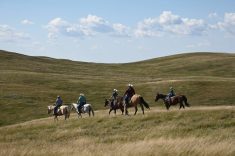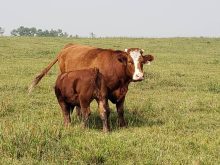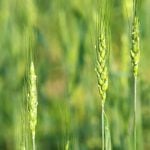I often think that the ranching business is very simple until you get humans involved. At the most basic level, sun and rain grow forage, cows consume forage and reproduce and ranchers sell the offspring. Pretty simple, until it’s not.
Fundamentally, this simple picture does provide some insight into what drives profit on most cow-calf operations and may indicate some management adjustments that can lead to improved profitability.
TOPPING THE LIST
First is forage. We can argue about starting at the more fundamental level of soil health, but the reality is that plants are one of our most powerful management tools for improving soil health. Forage provides the basis for production and animal performance. A key profit-driver is the ability to collect solar energy through layers of leaf material across varying seasons through plant biodiversity.
Read Also

Harvest wraps up and fall work begins
At the Eppich famly ranch in western Saskatchewan, the fall harvest was successful with few breakdowns, cows and calves have been sorted and a new tractor has arrived
The more sunlight you can capture per day for more days, the more forage for animals. As forage increases, litter levels also increase, along with soil organic matter, resulting in increased “effective precipitation.” The first profit-driver for most operations is to grow a higher volume of biodiverse forages. From a management perspective, this means timing the density and duration of grazing, and allowing forages time to recover from grazing and regrow.
Generally speaking, well-thought-out investments in forage management pay dividends to ranching operations.
A NUMBERS GAME
Second is reproduction. We often focus on performance or growth, but the reality for most ranches is that more live calves and a lower replacement rate generates more revenue than increased growth. Like most things, this requires some balance, as throwing funds at improving reproduction rates will be outbalanced by the increased number of offspring at some point.
Additionally, if we consider consistent reproduction and the ramifications, it likely means few replacements (more calves to sell), a larger portion of the cow herd in their prime production years (heavier calves compared to heifers), and more calves born early in the calving season (heavier calves at weaning). Natural reproductive fitness does most of these things without a lot of added expenses.
THE VALUE OF INPUTS
As we manipulate the system and work cattle to gain more or produce heavier weights at specific points in the year, we often add costs. Like all costs, these will have a diminishing rate of return. For example, the first bag of mineral may result in enhanced pregnancy rates, but feeding more mineral than the cows can consume would be a colossal waste of money.
It is important (this is where the ranching part comes in) to carefully assess the target and the inputs and really think through this diminishing rate of return. I said all costs have a diminishing rate of return, but I did not say that all costs have a positive rate of return. Some expenses can have negative returns (the cost is more than the return) that only get worse the more you do. We have some examples on our ranch of things we have tried that have had a negative rate of return. They are also things we have stopped doing. Doing none of a negative, is usually a positive.
As a quick reference point, I went to Canfax and pulled the average October price of 550- and 850-pound steers. I then calculated the total value of each and the value difference. On average over the last 10 years, the value of an 850-pound steer in October has been $435 more than a 550-pound steer. I appreciate that every ranch, every rancher and every situation is different, but I believe this is a good rough number that starts to give an indication of the potential spending limits to hit higher weaning weight production targets.
Remember the law of diminishing returns as you work through your own numbers and remember to keep it simple. No matter how different you think your operation is, the basic principles of solar capture, forage production and reproduction will hold true.















